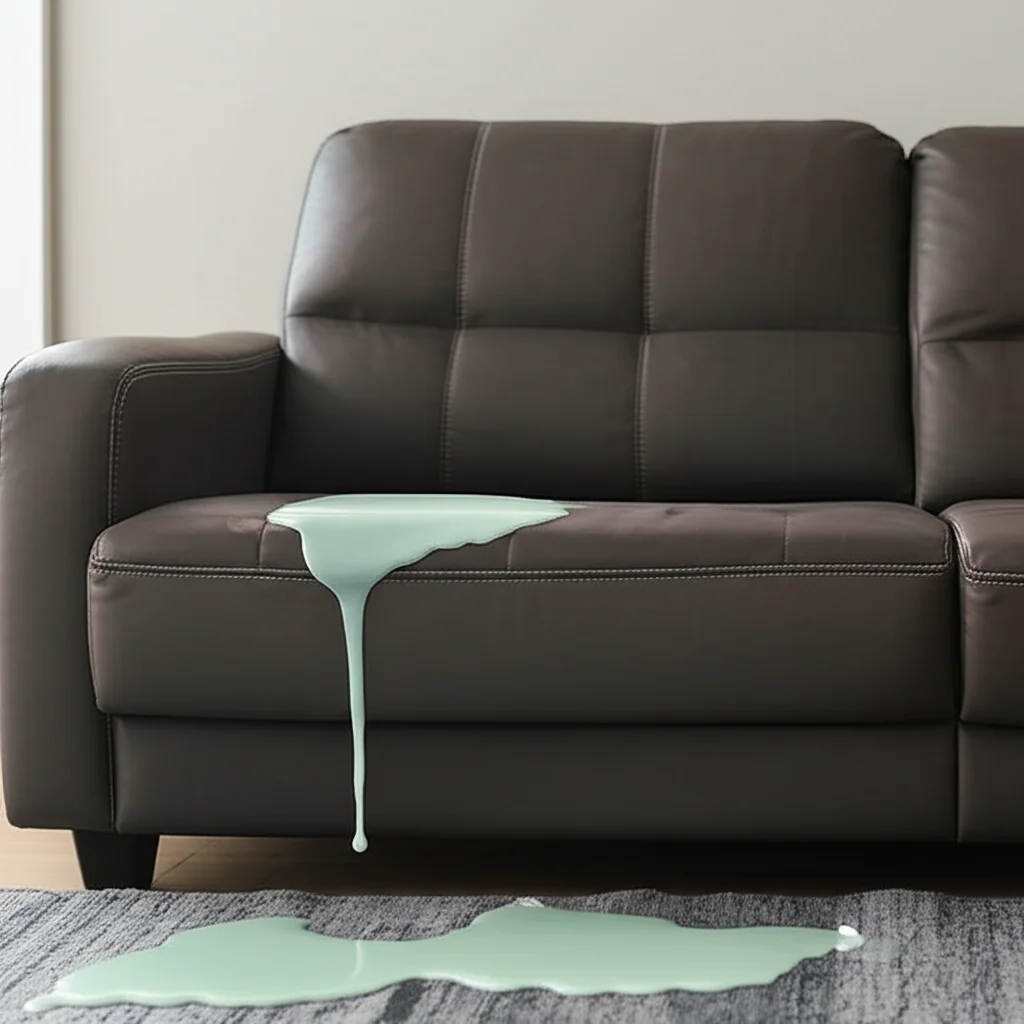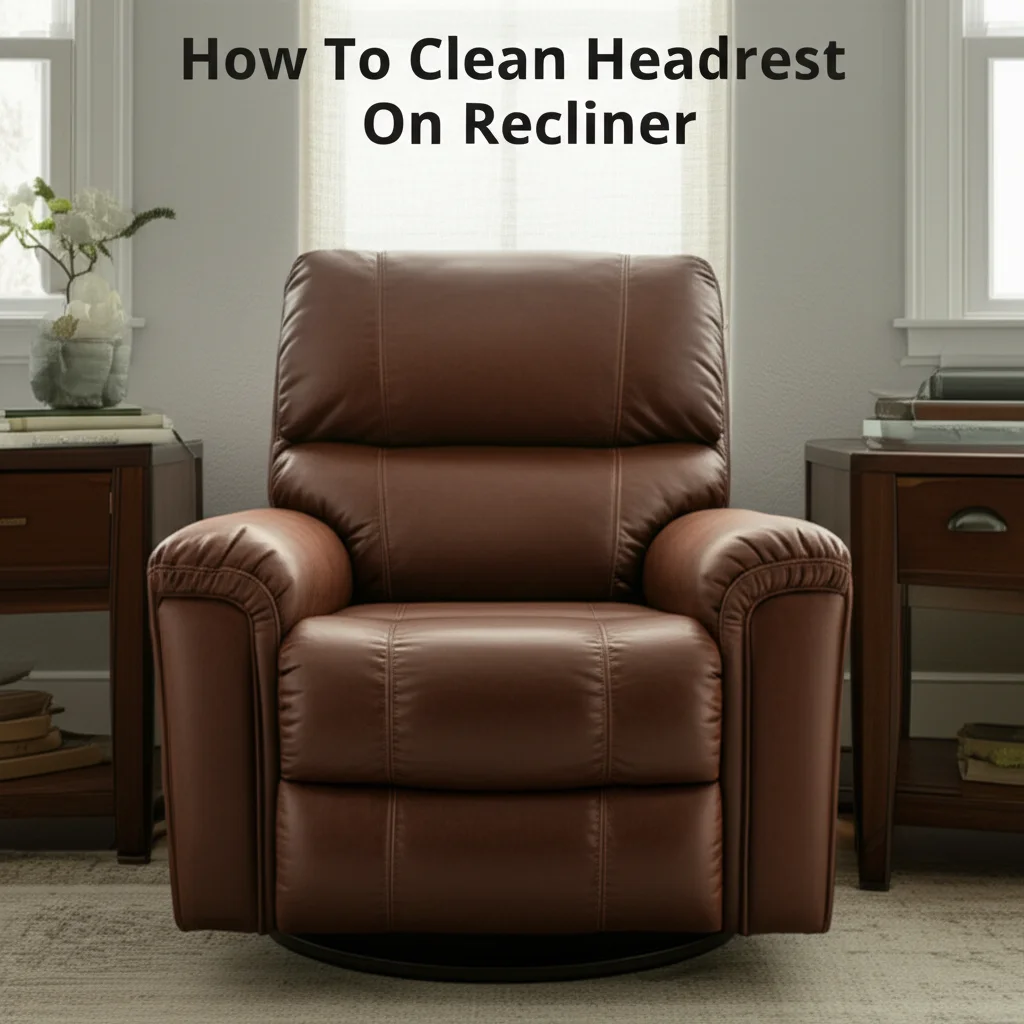· Todd Martin · Home Care · 15 min read
How To Clean Vomit Off Couch

How To Clean Vomit Off Couch: A Quick Guide
It happens. One moment you are relaxing, and the next, a family member or pet suddenly vomits on your cherished couch. This unpleasant incident can feel overwhelming. You might panic, wondering how to tackle the mess without ruining your upholstery. Rest assured, cleaning vomit off your couch is a manageable task.
Dealing with vomit quickly prevents permanent stains and lingering odors. This guide provides step-by-step instructions. We will cover immediate actions, proper cleaning techniques, and effective odor removal strategies. You will learn to identify your couch fabric type and choose the right cleaning solutions. By the end, your couch will look and smell fresh again.
Takeaway
- Act immediately to remove solids and blot liquids.
- Identify your couch fabric cleaning code to prevent damage.
- Use appropriate cleaning solutions, natural or commercial, for stains and odors.
- Ensure thorough drying to prevent mildew and lingering smells.
To effectively clean vomit off your couch, immediately scrape away solids, blot up liquids, and then apply a suitable cleaning solution based on your couch’s fabric type. Follow with thorough rinsing and drying to eliminate both the stain and any lingering odor, restoring your couch’s freshness.
Immediate Steps: Dealing with Fresh Vomit on Your Couch
A fresh vomit stain on your couch requires immediate action. Time is essential when cleaning up these messes. The longer vomit sits, the deeper it penetrates the fibers. This makes stains harder to remove and odors more difficult to eliminate. My first thought is always to move fast.
First, gather your supplies. You will need paper towels or old cloths, a spoon or dull knife, and a trash bag. These items help you manage the initial cleanup efficiently. You want to contain the mess and prepare the area for deeper cleaning. For similar immediate action on different surfaces, you can review tips on how to clean vomit on floor. The principle of quick removal remains consistent.
Begin by carefully scraping any solid matter off the couch. Use the spoon or dull knife for this. Scoop the solids gently into the trash bag. Be careful not to push the vomit deeper into the fabric during this step. Your goal is to remove as much physical material as possible. This prevents larger stains later on.
After removing solids, blot the remaining liquid. Use clean paper towels or an absorbent cloth. Press down firmly but do not rub. Rubbing spreads the stain and pushes it further into the upholstery. Continue blotting until the area is as dry as possible. This process lifts the liquid from the fabric. It sets the stage for cleaning solutions.
Understanding Your Couch Fabric and Cleaning Codes
Before you apply any cleaning solution, you must know your couch fabric type. Different fabrics react differently to cleaners. Using the wrong product can damage your upholstery. Always check the care tag on your couch. It usually sits under the cushions or on the frame. This tag provides crucial cleaning codes.
These codes are standard industry symbols. They guide you on safe cleaning methods. Here is what each code means:
- W (Water): You can use water-based cleaning solutions. This is the easiest type to clean. Many common cleaners work well on W-coded fabrics.
- S (Solvent): Use water-free solvents only. Water can stain or damage these fabrics. You will need a dry-cleaning solvent or a specialized upholstery cleaner.
- WS (Water/Solvent): You can use either water-based cleaners or solvents. This offers the most flexibility.
- X (Vacuum Only): Do not use any liquid cleaners. These fabrics are delicate. They can only be vacuumed or brushed. Professional cleaning is often recommended for such materials.
If your couch has an “S” or “X” code, proceed with extreme caution. Water can cause watermarks or shrinkage. For an “X” code, you may need professional help. Using a steamer is generally not advised for S-coded or X-coded fabrics. However, for “W” or “WS” coded fabrics, understanding how to use tools like a steamer can be very helpful. You can learn more about how to clean couch with steamer for appropriate fabrics.
Always test any cleaning solution in an inconspicuous area first. This could be the back of the couch or underneath a cushion. Apply a small amount of the cleaner. Wait a few minutes. Check for any discoloration or damage. If the fabric shows no adverse reaction, you can proceed with confidence. This simple test prevents larger issues.
Natural Cleaning Solutions for Vomit Stains
After removing the bulk of the vomit, you need to treat the remaining stain and odor. Natural cleaning solutions often work wonders. They are safe for many fabrics and gentle on your home. I often turn to these methods first.
Baking Soda for Absorption and Odor: Baking soda is an excellent natural cleaner. It absorbs moisture and neutralizes odors effectively. First, lightly dampen the stained area with a clean cloth. Then, generously sprinkle baking soda over the entire affected spot. Make sure the stain is completely covered. Let it sit for several hours, or even overnight. The longer it sits, the more moisture and odor it absorbs. After it dries, vacuum up the baking soda thoroughly. This method is often effective for lingering smells and minor stains. For more detailed tips on using this versatile product, see our guide on how to clean couch with baking soda.
White Vinegar for Disinfection and Odor Neutralization: White vinegar is another powerful natural cleaner. Its acidic nature helps break down stains and kill odor-causing bacteria. Mix equal parts white vinegar and cool water in a spray bottle. Lightly mist the stained area. Do not oversaturate the fabric. Blot the area gently with a clean cloth. Repeat this process until the stain begins to fade. Vinegar might smell strong initially, but the odor dissipates as it dries. You can also explore how vinegar helps with other cleaning tasks, such as understanding how to clean mold with vinegar. This highlights its broad disinfectant properties.
Cornstarch for Fresh Vomit: For very fresh, moist vomit, cornstarch can be useful. It acts similarly to baking soda by absorbing liquids. Sprinkle cornstarch directly onto the fresh stain. Let it sit for about 15-20 minutes. The cornstarch will clump as it absorbs the moisture. Scrape it off gently with a spoon. Then, vacuum up any residue. This helps lift much of the moisture before you apply other cleaning solutions.
These natural options are usually safe for “W” or “WS” coded fabrics. Always remember to perform a spot test first. These methods are eco-friendly and leave no harsh chemical residues.
Commercial Cleaners and Spot Removers
When natural methods aren’t enough, or for tough vomit stains, commercial cleaners offer a stronger solution. These products are formulated to tackle specific types of stains and odors. I always keep a good upholstery cleaner on hand.
Enzyme Cleaners: Enzyme cleaners are highly effective for organic stains like vomit. They contain enzymes that break down proteins and organic matter. This helps eliminate both the stain and the associated odors. Spray the enzyme cleaner directly onto the vomit stain. Follow the product instructions for dwell time. Usually, you let it sit for 10-15 minutes. Then, blot the area with a clean cloth. These cleaners are particularly good at neutralizing odors at their source. They are often recommended for pet accidents as well. For similar challenges with organic stains and odors, consider how to clean how to clean spit up off couch or even how to clean pee off a couch where enzyme cleaners are also effective.
Upholstery Spot Removers: Many brands offer specialized upholstery spot removers. These are designed to lift various stains from fabric. Read the product label carefully to ensure it is safe for your couch’s fabric type. Apply the spot remover according to the directions. Most require you to spray or dab the cleaner onto the stain. Then, you blot it away. Some spot removers also contain odor neutralizers.
Using a Carpet or Upholstery Cleaner Machine: For deep-set stains or larger areas, a portable carpet and upholstery cleaner machine can be very useful. Machines like the Bissell Little Green use a combination of water and cleaning solution to spray, scrub, and suction dirt from fabric. These machines provide a deeper clean than manual methods. They are especially helpful for heavily soiled areas or for overall refreshment of the couch. If you own one, or are considering one, learning how to clean couch with Bissell Little Green offers specific guidance for this tool. Always ensure your couch fabric is water-safe before using such a machine.
When using any commercial cleaner, ventilation is important. Open windows and doors. This helps dissipate fumes and speeds up drying. Always follow the manufacturer’s instructions precisely. This ensures safe and effective cleaning.
Tackling Stubborn Stains and Lingering Odors
Even after initial cleaning, some vomit stains or odors can persist. Stubborn stains require a bit more persistence. Lingering odors mean the source has not been fully neutralized. I find that patience and re-application are key here.
Re-treating Stubborn Stains: If a stain remains after the first attempt, do not give up. You might need to repeat the cleaning process.
- Layering with Baking Soda Paste: Mix baking soda with a small amount of water to form a thick paste. Apply this paste directly onto the stubborn stain. Let it dry completely. The baking soda draws out remaining moisture and stain particles. Once dry, scrape off the paste and vacuum the residue.
- Hydrogen Peroxide (for light-colored fabrics): For very light-colored or white fabrics, a diluted hydrogen peroxide solution can lift tough stains. Mix one part 3% hydrogen peroxide with two parts water. Test it on an inconspicuous area first. Apply the solution sparingly to the stain with a clean cloth. Blot gently. Hydrogen peroxide can bleach colored fabrics, so use it with extreme caution.
- Repeat Commercial Cleaner Application: Sometimes, a single application of a commercial cleaner is not enough. Re-apply the enzyme cleaner or spot remover. Allow it to work for the recommended time. Blot thoroughly. Repeating this cycle can gradually lift the stain.
Eliminating Lingering Odors: The smell of vomit is strong and unpleasant. It can be hard to get rid of completely.
- Ventilation: Good airflow is critical. Open windows and use fans to circulate air. This helps dry the cleaned area and removes airborne odor molecules.
- Activated Charcoal: Place small bowls of activated charcoal near the cleaned area. Activated charcoal absorbs odors from the air. It is a natural and effective deodorizer.
- Odor Neutralizing Sprays: Use an upholstery-safe odor neutralizer. These sprays chemically neutralize odors rather than just masking them. Look for products specifically designed for pet or organic odors.
- Sunlight Exposure: If possible, move the couch into direct sunlight. UV rays are natural disinfectants and deodorizers. Sunlight helps break down odor-causing bacteria and dries the fabric more completely. Always check if sunlight will fade your fabric first.
For very strong, persistent odors, professional upholstery cleaning might be necessary. Professionals have stronger equipment and chemicals. They can reach deep into the upholstery.
Drying Your Couch Properly After Cleaning
Proper drying is as important as the cleaning itself. If your couch remains damp, it can develop mildew. Mildew smells unpleasant and can damage your upholstery. It can also pose health risks. I always prioritize drying to avoid these issues.
Air Circulation is Key: The best way to dry your couch is through good air circulation.
- Open Windows: Open all nearby windows and doors. This creates a cross-breeze. It helps evaporate moisture from the fabric.
- Use Fans: Place fans strategically around the couch. Point them directly at the cleaned area. Floor fans or box fans work well. This significantly speeds up the drying process.
- Dehumidifier: If you live in a humid climate, a dehumidifier is invaluable. It removes moisture from the air. This helps the couch dry faster and prevents mildew growth.
Avoid Over-Wetting: During cleaning, try not to oversaturate the fabric. Use just enough cleaning solution to treat the stain. Excess moisture means longer drying times. It also increases the risk of watermarks or mildew. Blotting thoroughly after cleaning helps remove excess liquid.
Check Underneath Cushions: Don’t forget to check under the cushions. Moisture can pool in these areas. Lift cushions and prop them up. This allows air to circulate underneath them. If cushion covers are removable and washable, wash them according to their care instructions. Ensure the inner foam or filling also dries completely.
Patience is a Virtue: Drying can take several hours, or even a full day. The exact time depends on your fabric type, the amount of moisture, and your home’s humidity. Do not use the couch until it is completely dry. Press your hand firmly onto the cleaned spot. If you feel any dampness, continue drying. A completely dry couch feels normal to the touch. This attention to detail prevents future problems.
Preventive Measures and Future Protection
Once you have successfully cleaned vomit off your couch, you will want to prevent future incidents. Or, at least make them easier to clean. Taking a few proactive steps can save you a lot of effort. I believe prevention is always better than cure.
Couch Covers and Throws: The simplest way to protect your couch is by using covers or throws. These act as a barrier between your couch and potential spills.
- Washable Couch Covers: Invest in a fitted, washable couch cover. These come in various styles and colors. They can be easily removed and laundered if an accident occurs. This protects the original upholstery.
- Decorative Throws: Use large decorative throws over areas most prone to spills, like the seat cushions. These are less formal than full covers. They still provide a protective layer. They can be quickly tossed into the washing machine.
Fabric Protectors: For an invisible shield, consider applying a fabric protector spray. Products like Scotchgard create a repellent barrier. They do not alter the feel or appearance of your upholstery.
- Repel Liquids: Fabric protectors make liquids bead up on the surface. This gives you more time to blot the spill before it soaks in.
- Stain Resistance: They also make stains easier to clean. The protective layer prevents dirt and liquids from bonding directly with the fabric fibers.
- Application: Always test the spray on an inconspicuous area first. Follow the product instructions for application and re-application frequency. These sprays typically need to be reapplied periodically.
Quick Clean-Up Kits: Assemble a small, readily accessible cleaning kit. Keep it near your couch. This allows for immediate response to spills.
- Essential Items: Include paper towels, a dull knife or spoon, a spray bottle with a diluted cleaning solution (e.g., vinegar and water), baking soda, and a clean blotting cloth.
- Emergency Readiness: Having these items at hand saves precious minutes. You won’t waste time searching for supplies during an emergency. This quick response is vital for effective stain removal.
Establish House Rules (if applicable): If you have children or pets, establishing certain rules can help. Perhaps no food or drink on the couch. Or, ensure pets are not allowed on furniture if they are prone to accidents. These small changes can make a big difference in maintaining your couch’s cleanliness.
FAQ Section
How do I remove old, dried vomit from a couch?
To remove old, dried vomit, first rehydrate the stain. Mist it with warm water or a diluted cleaning solution. Let it sit for 10-15 minutes. This softens the dried material. Then, gently scrape away solids with a dull knife. Proceed with standard cleaning methods using an enzyme cleaner or baking soda paste.
Can I use a carpet cleaner on my couch?
You can use a carpet cleaner on your couch if the fabric has a “W” or “WS” cleaning code. Always test a small, hidden area first for colorfastness. Ensure the cleaner is safe for upholstery use. Avoid over-saturating the fabric to prevent mildew or watermarks.
How do I get rid of the vomit smell from a couch?
To eliminate vomit smell, ensure the area is thoroughly cleaned. Then, sprinkle baking soda generously over the cleaned spot. Let it sit for several hours, or overnight, to absorb odors. Vacuum it up. For persistent odors, use an enzyme cleaner or a specialized odor neutralizer. Good ventilation helps significantly.
Is hydrogen peroxide safe for all couch fabrics?
No, hydrogen peroxide is not safe for all couch fabrics. It can bleach or discolor many types of fabrics, especially darker ones. Only use a diluted 3% hydrogen peroxide solution on very light-colored or white fabrics after performing a discrete patch test. Always proceed with extreme caution.
What if my couch fabric is “X” code?
If your couch fabric has an “X” cleaning code, it means “vacuum only.” Do not use any liquid cleaners, including water. For vomit stains, carefully scrape off solids and vacuum thoroughly. For deeper cleaning or persistent stains, it is best to consult a professional upholstery cleaner. Liquids can cause damage.
How can I prevent vomit stains in the future?
Prevent future vomit stains by using washable couch covers or large throws. These act as a protective barrier. You can also apply a fabric protector spray that repels liquids and makes spills easier to clean. Keeping a quick-response cleaning kit handy allows for immediate action on new spills.
Conclusion
Cleaning vomit off your couch might seem like a daunting task, but it is entirely manageable with the right approach. We have walked through the essential steps, from immediate action to long-term prevention. Remember to act quickly, identify your fabric type, and choose appropriate cleaning solutions, whether natural remedies like baking soda and vinegar or commercial enzyme cleaners. Thorough drying is crucial to avoid mildew and lingering odors.
Taking these steps ensures your couch is not only clean but also fresh-smelling. Don’t let an accidental mess ruin your comfort or your furniture. By following this guide, you can restore your couch to its pristine condition. Keep these tips in mind for a clean and inviting living space. Your quick action and proper care will make all the difference.





